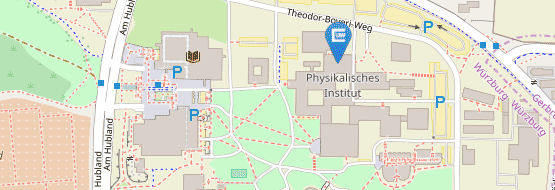Tim Wagner (PhD thesis): Characterization of 2D Antimony Lattices
Two-dimensional lattices are in the focus of research in modern solid state physics due to their novel and exotic electronic properties with tremendous potential for seminal future applications. Of particular interest within this research field are quantum spin Hall insulators which are characterized by an insulating bulk with symmetry-protected metallic edge states. For electrons within these one-dimensional conducting channels, spin-momentum locking enables dissipationless transport - a property which promises nothing short of a revolution for electronic devices. So far, however, quantum spin Hall materials require enormous efforts to be realized such as cryogenic temperatures or ultra-high vacuum. A potential candidate to overcome these shortcomings are two-dimensional lattices of the topological semi-metal antimony due to their potential to host the quantum spin Hall effect while offering improved resilience against oxidation. In this work, two-dimensional lattices of antimony on different substrates, namely Ag(111), InSb(111) and SiC(0001), are investigated regarding their atomic structure and electronic properties with complimentary surface sensitive techniques. In addition, a systematic oxidation study compares the stability of Sb-SiC(0001) with that of the two-dimensional topological insulators bismuthene-SiC(0001) and indenene-SiC(0001). A comprehensive experimental analysis of the (√3×√3)R30◦ Sb-Ag(111) surface, including X-ray standing wave measurements, disproves the proclaimed formation of a buckled antimonene lattice in literature. The surface lattice can instead be identified as a metallic Ag2Sb surface alloy. Antimony on InSb(111) shows an unstrained Volmer-Weber island growth due to its large lattice mismatch to the substrate. The concomitant moiré situation at the interface imprints mainly in a periodic height corrugation of the antimony islands which as observed with scanning tunneling microscopy. On islands with various thicknesses, quasiparticle interference patterns allow to trace the topological surface state of antimony down to the few-layer limit. On SiC(0001), two different two-dimensional antimony surface reconstructions are identified. Firstly, a metallic triangular 1 × 1 lattice which constitutes the antimony analogue to the topological insulator indenene. Secondly, an insulating asymmetric kagome lattice which represents the very first realized atomic surface kagome lattice. A comparative, systematic oxidation study of elemental (sub-)monolayer materials on SiC(0001) reveals a high sensitivity of indenene and bismuthene to small dosages of oxygen. An improved resilience is found for Sb-SiC(0001) which, however, oxidizes nevertheless if exposed to oxygen. These surface lattices are therefore not suitable for future applications without additional protective measures.

